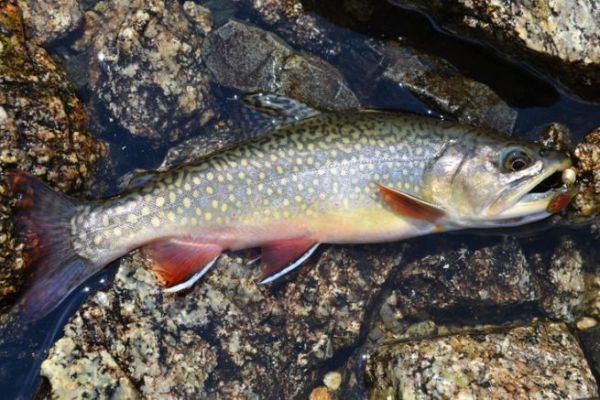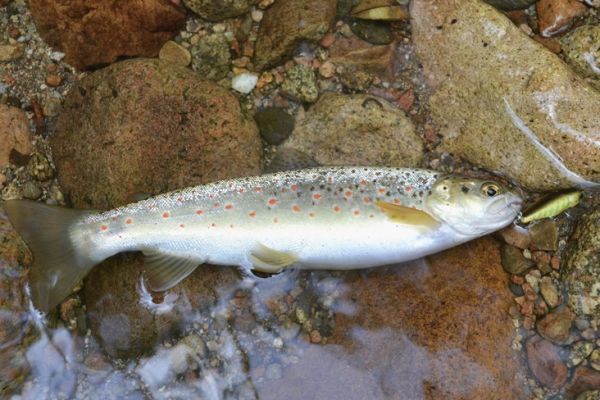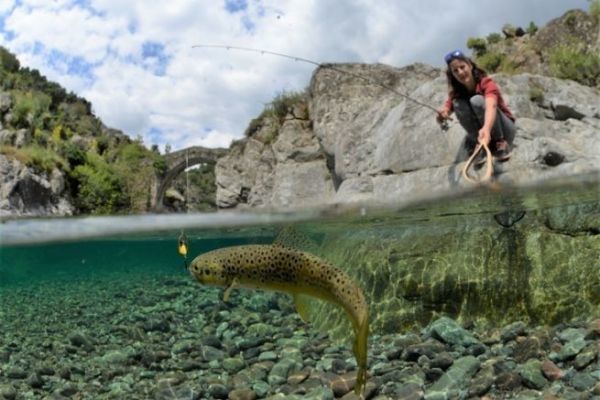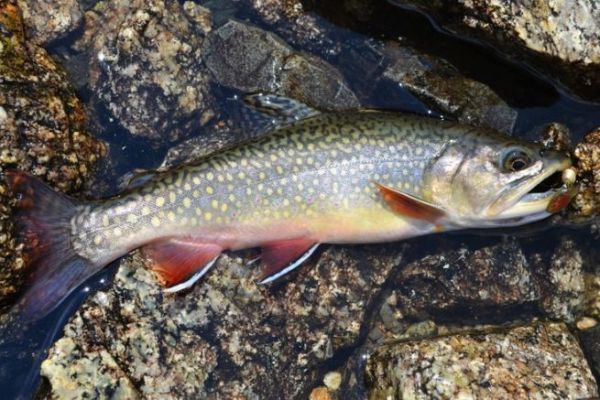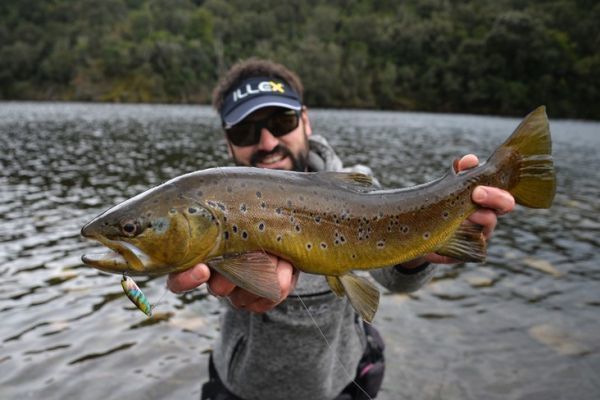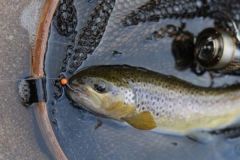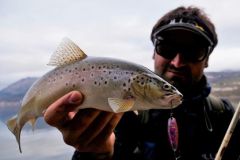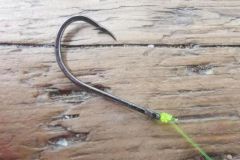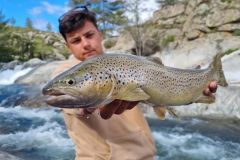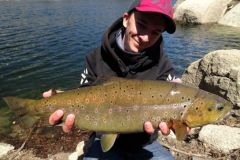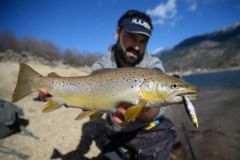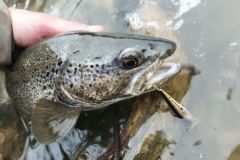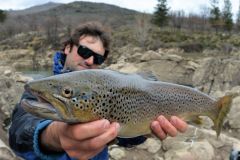Simple design
The spinner is a metal lure, consisting of a weighted shaft on which a metal paddle rotates. A single hook completes the lure, and a simple loop at the end of the rod is used to attach the line. This simple-looking lure is very clever.
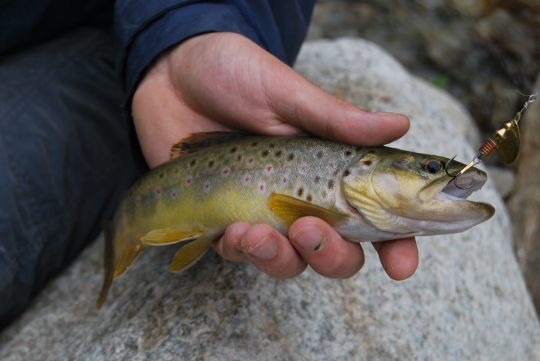
This lure has proved its worth since the very beginnings of trout lure fishing. Its strong vibrations, visual signals and ability to move in currents make it a must-have. It's a very simple lure to use. Perfect for casting both upstream and downstream. Its density makes it easy to cast and its sturdiness and price mean it can be used on rocks and in crowded environments without fear of losing an expensive lure.
The spinner, like virtually all metal lures, is effective all year round.
Understanding this lure
There are many different types of spinners to choose from, allowing us to adapt to the morphology of the course we're fishing. First, the size of the blade, from n°00 to 3 (for trout). This will determine the size of the lure. The smaller the blade (n°00), the weaker the vibrations and visual signals. It no longer necessarily imitates a fish crossing a current, but a larva or an invertebrate. Large paddles n°2 or 3 will turn more slowly, but with stronger, more powerful signals. In general, the shallower the current and the greater the depth, the smaller the spinners you can use.
The shape of the pallet is also very important. It determines the paddle's rotation. The larger the surface area, the more force it will exert in the water. Long, thin paddles are better suited to strong currents, especially when fishing downstream. They have a much shallower angle and less force in the liquid.
Nail- or teardrop-shaped stirrup paddles (Mepps Aglia) will spin easily even on slow retrieves. They emit strong signals as the paddle rotates with great amplitude.
In in-line models (like the famous Panther Martin), the spoon shaft (the stem) passes directly through the pallet at the first third or quarter. Their vibration is finer and more discreet, but their rotation is very reactive and fast. They are ideal for river fishing, crossing currents or downstream fishing.

The larger the blade, the more weight is needed to stabilize the lure. Here again, there are several types of ballast, depending on whether you want to fish slow and deep or fast. Brass and lead weights are the most widespread, but steel balls or tungsten balls are also used. The latter is very dense, giving a compact silhouette and low volume for better current fishing.
Finally, care must be taken to select the right palette colors, which are more important than the color of the ballast. Silver, gold and copper are three basic colors that should be used regularly. Black is also a great classic, especially when trout are focused on insects or invertebrates.
Fluorescent palettes in yellow, orange or pink are also very effective in very murky water and low light conditions.
Appropriate equipment
To optimize the use of lures exerting a strong pull on the line (pulling hard on the retrieve), a parabolic rod is preferable. It bends easily and absorbs vibrations. On the strike, the rod acts as a shock absorber, absorbing the "impact" as the line is still under tension. This helps the fish to get a better grip on the lure and the spinning spoon is not taken out of the mouth by too nervous a rod action.
Care must be taken when choosing your reel, especially the retrieve ratio, depending on whether you're fishing upstream or downstream. While the high ratio is really comfortable for upstream fishing, it becomes very "heavy" and sometimes too tiring for downstream fishing in strong currents.
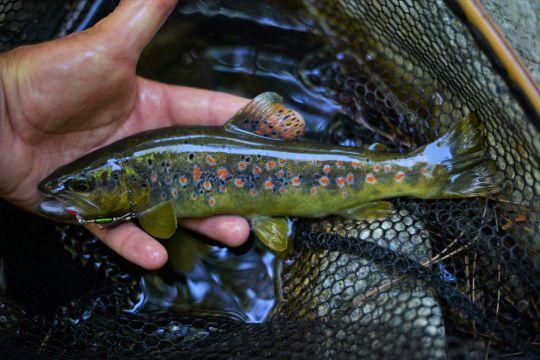
Nylon line is the ideal choice to provide damping and suppleness. It's elastic and offers greater comfort on the river.
Finally, don't forget to use a rolling swivel to secure your spoon. In the long run, the rolling spoon ends up twisting the line, creating wigs or making casts less accurate. The swivel slows down this twisting phenomenon.
